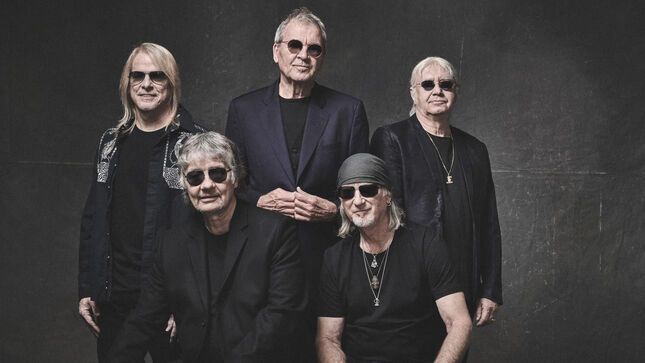
Unlike many other rock bands, Deep Purple proved that real talents may successfully pass constant and even tragic change and keep their popularity throughout time. After the release of their first album Shades of Deep Purple (1968), the squad has gone through 8 different line-ups, and several reunions responsible for their best works. Drummer Ian Paice was and remains the only permanent member of the band. We’ve collected all the pieces of the puzzle together in this selection of Deep Purple lineup changes. Let’s review them together.
1968-69: Ritchie Blackmore/Jon Lord/Ian Paice/Rod Evans/ Nick Simper
The Deep Purple supergroup was centered around the talents of classically trained organist Jon Lord and guitarist Ritchie Blackmore, whose résumé already included such names as Screaming Lord Sutch, The Outlaws, etc. After Chris Curtis left the group, the band hired bassist Nick Simper (The Flower Pot Men) and singer Rod Evans (The Maze), who brought along young drummer Ian Paice. With this line-up, the band recorded three full-length albums, experienced an immediate US breakthrough, but then seemed to be in danger of becoming a one-hit band, which led them to a premature career crossroads.
1969-73: Ritchie Blackmore/Jon Lord /Ian Paice /Ian Gillan /Roger Glover
By the summer of 1969, Blackmore, Lord, and Paice agreed that a change in both sound and personnel was needed to revive Deep Purple’s career. They replaced Evans and Simper with vocalist Ian Gillan and bassist Roger Glover of Episode Six, who were better prepared for the new heavier direction, just like Yukon Gold Casino is 100% prepared for online gambling.
1973-75: Ritchie Blackmore/Jon Lord/Ian Paice/David Coverdale/ Glenn Hughes
Meet another pair of musicians – former Trapeze bassist and vocalist Glenn Hughes and a relatively unknown vocalist – David Coverdale. Together, they immediately regained their top form with 1974’s Burn and performed to perhaps the largest audience in history as headliners at the famous California Jam festival. Deep Purple eventually hired American guitarist Tommy Bolin. He brought a limitless supply of talent and impeccable versatility with him.
1984-89: Ritchie Blackmore/Jon Lord/Ian Paice/Ian Gillan/Roger Glover
The group reunited almost 10 years after Deep Purple’s retirement and more than 10 years since they shared a stage or studio. Their album, Perfect Strangers (1984), had longtime fans so excited that they likely overlooked the possibility of it all becoming short-lived again.
2002-Present: Ian Paice/Ian Gillan /Roger Glover/Steve Morse/ Don Airey
This is already the longest-running Deep Purple lineup ever. Lord (who passed away in 2012 from pancreatic cancer) was replaced by Airey, a keyboardist with a lengthy résumé that includes appearances with Ozzy Osbourne, Rainbow, Black Sabbath, and Whitesnake. While the band remains focused on touring, they have also released eight studio albums including Purpendicular (1996), Abandon (1998), Bananas (2003), Rapture Of The Deep (2005), Now What?! (2013), Infinite (2017), Whoosh! (2020) and Turning To Crime (2021).
Steve Morse recently took a temporary hiatus from Deep Purple, but remains a full member of the band. Steve’s replacement for the upcoming live shows in June and July 2022 will be guitarist Simon McBride, who has previously toured with both Ian Gillan and Don Airey amongst others.